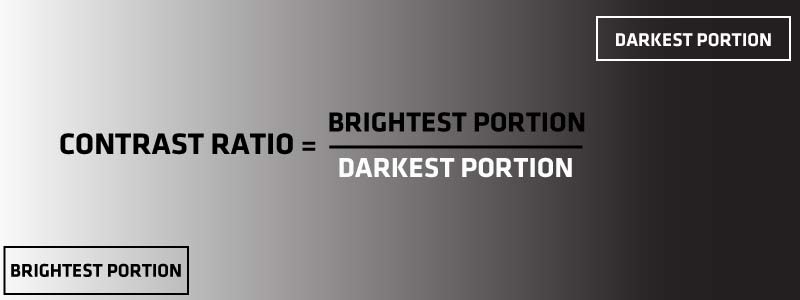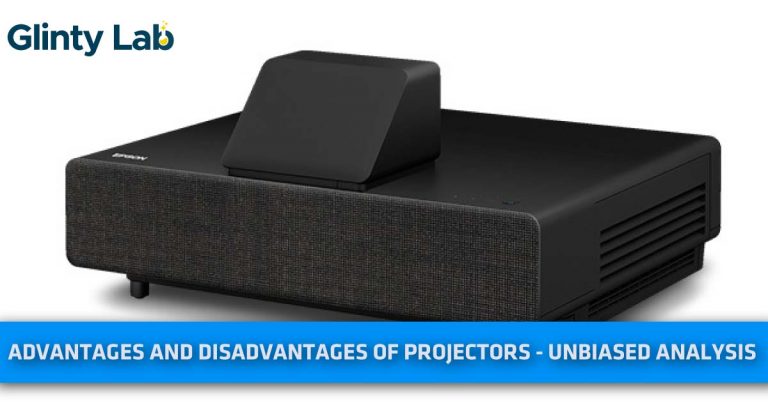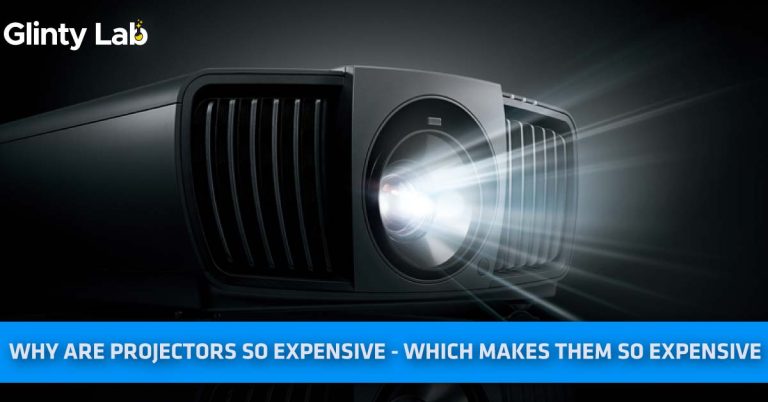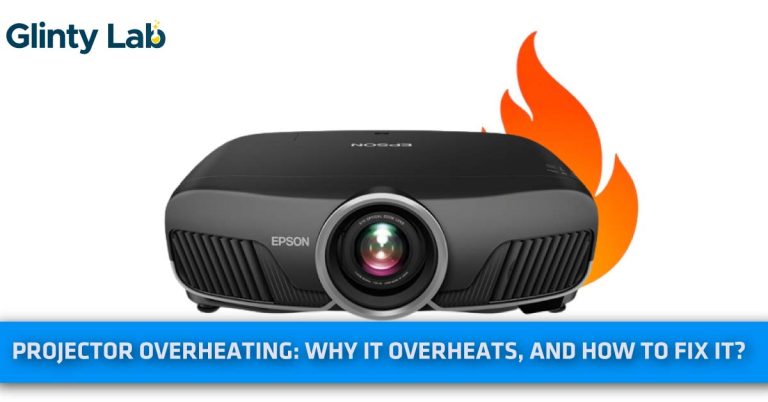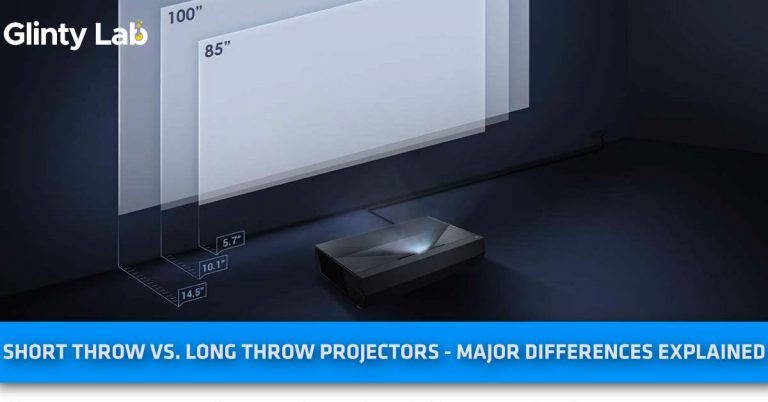All About Projector Contrast Ratio – Why It’s Necessary?
What Is The Projector Contrast Ratio?
The ratio between the maximum bright white and maximum dark black on the screen is known as the projector contrast ratio.
For example: If you have a projector with a 2000:1 contrast ratio you will get 2000 times bright whites than dark black.
Our Recommended Projectors for Black Levels
?????
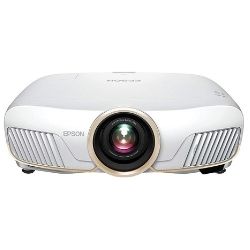
- 12-bit analog to display
- 3 axis Motorize lens.
- True 3-Chip
?????
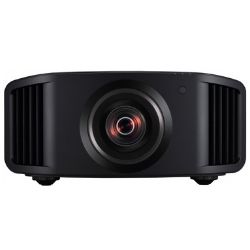
- TRUE 4K
- Fantastic HDR Handling
- Stunning Blacks
Checkout our top-rated projectors under $500 with a decent contrast ratio
What Are The Types Of Contrast Ratio And Their Measurements?
We are going to discuss the FOFO (Full-On and Full-Off) and ANSI contrast which is highly relevant to the projectors. While you are at it, learn about projector resolution as well.
What Is Full-On And Full-Off (FOFO):
It is the ratio between the brightness of the solid white image to the darkest solid black image of the projector.
i.e.: if a home theater unit has†a 2000:1 FOFO contrast ratio your projector will produce 2000x brighter solid white images as compared to solid black images.
(An image to understand the measurements of FOFO Contrast ratio):
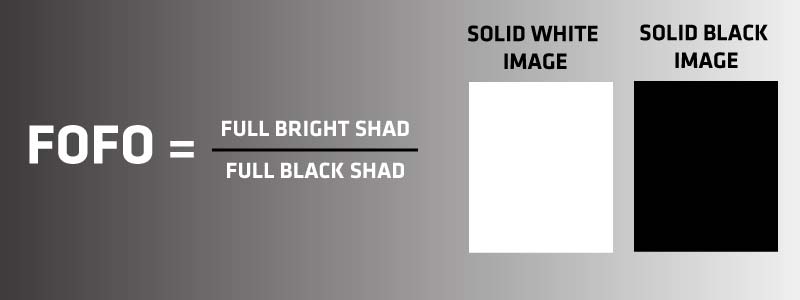
What Is ANSI Contrast:
This is the ratio between 8 or 16 solid images of white to the 8, 12, and 16 solid black images.
Simply in ANSI contrast, we take a checkboard of 8, 12, and 16 images of white and black and then we extract the ratio of them.
(An image to understand the measurements of ANSI Contrast ratio):
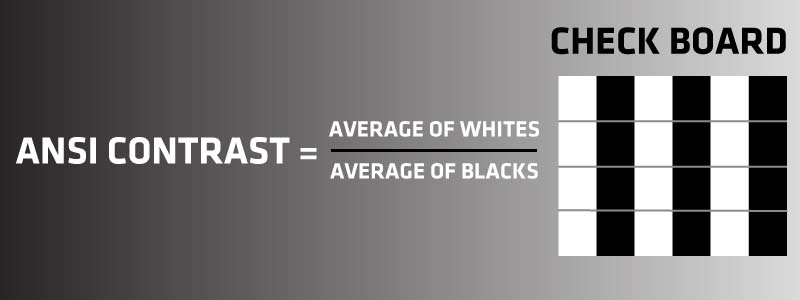
Why Contrast Ratio Is Important For Projectors?
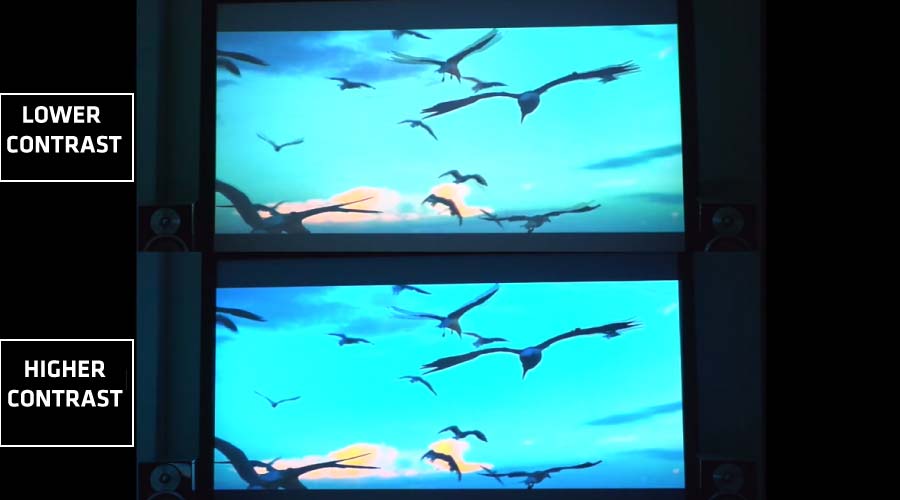
As the name clarifies itself that the contrast ratio is a ratio between white and dark or the shades of bright and dark. It plays a vital role to provide rich colors, clear shadows, and deeper blacks with negligible dullness or fadedness.
As per our data, without a decent contrast ratio, you will get muted colors and terrible blacks even if your projector has a mind-blowing color gamut and brightness.
The contrast ratio is powerful enough to provide you with nearly 3-dimensional pictures, popup the colors and black levels, provide sufficient clearness as well. Also, the contrast ratio is a key ingredient to develop the mood of users according to the scenes.
What Is A Good Contrast Ratio For A Projector?
Well, we can't provide you with a fixed contrast ratio for a projector because the selection of the contrast ratio solely depends on the environment.
If you are going to operate your projector in a dark room you need a projector with a lower contrast ratio, however, if you are going to operate in modest ambient you need a projector with a higher contrast ratio.
- A higher contrast ratio means deeper dark scenes, however, a lower contrast ratio means brightener dark scenes.
- If you got a projector with a lower contrast ratio, a transparent gray rectangle will be layered on the screen which will ruin the blacks and colors.
How To Improve The Contrast Ratio Of The Existing Projector?
As the contrast ratio solely depends on the environment we are going to provide you with some proven methods to improve the contrast ratio of the existing projector in both modest ambient and dark environments.
How To Improve The Contrast Ratio In Modest Ambient
1: Darken Your Room:
As ambient light is the enemy of projectors you can uplift the contrast ratio by darkening your room with some simple techniques.
- Paint your room with a dark color like gray.
- Make sure to close the windows properly, you can use a curtain to block the incoming lights as well.
- Your screen should be free from ambient lights.
- Make sure to off the all lights.
Now you are wondering if it is best to keep my projector in a dark room, yes you are right. It will work like a charm for you. Otherwise, the only option is to get a newer unit with high contrast ratio.
2: Replace Light Projector Screen With Dark:
Replacing an existing white screen with a dark screen is working very well for me, I have a projector with an average contrast ratio of 5000:1 which was working well in a dark cave but when I put it on a modest ambient room I feel the annoying gray fads.
After replacing the screen I feel significant improvements in the blacks. You can also check out our guide about black vs. white projector screens to explore the actual differences.
3: By Tweaking The Settings:
You can play with the following things in the setting of the projector to enrich the contrast ratio as well.
- Brightness
- Color saturation
- Color temperature
- Contrast
- Tint
- Skin tone
(setting section of Projector):

Also, some modern projectors have built-in modes to make adjustments within a click, as I have BenQ Ht3500i that has some preset modes like HDR10 and HLG, optimized movies, cinema master video+.
The major benefits of preset modes are, you don't need to do calibration; you will get the professional calibration right out of the box. On the other hand, if you are going to do calibration yourself you may not get satisfactory results until you are an expert, as calibration needs an experienced eye.
How To Improve The Contrast Ratio In Dark
1: Make sure to block any source of ambient lights. 2: Paint your room with a dark color, also ceiling should be dark as well to get a top-notch contrast within a decent dark environment. 3: by tweaking the color setting as we have mentioned above, you have to play with brightness, color saturation, color temperature, contrast. Tint etc. to get your desired contrast and blacks.How Does Brightness Affect The Contrast Ratio?
The bright projectors mostly have better contrast because bright projectors are solely built for the modest ambient. If the projector doesn't have higher contrast and lumens it can't provide decent picture quality in ambient. Basically, the lumens and contrast ratio supports each other to fight with the ambient lights.
Native Contrast Vs. Dynamic Contrast Ratio
- The native or static contrast ratio of a projector is the contrast ratio that can achieve by the projector itself; you may see the native contrast ratio listed by the manufacturer on the sections of the specification like 5,000:1 or 10,000:1.
- Dynamic contrast ratio is the top contrast levels that a projector can produce, like a projector can produce different contrast levels in several modes like brightest cinema, etc. Now the manufacturer list that the projector can achieve a 1,000,000:1 contrast ratio or even infinity contrast ratio but this is only a theoretical measurement, they didn’t make practical calculations like native contrast ratio.
- Dynamic contrast ratio is only hyped it’s not attainable, the manufacturer just claimed that our projector or TV can achieve millions of contrast ratios, however, a native contrast ratio is a real practical figure.
- Purchase a projector that should have a mind-blowing contrast ratio rather than the millions of dynamic contrast ratio.
Bottom Line Of Projector Contrast Ratio
The contrast ratio is the backbone of picture quality, if your projector doesn't have a sufficient contrast ratio you will get completely washed-out images without vibrant colors and deeper black levels.
We endorse you to get a projector with at least a 3,000:1 native contrast ratio if you are going to use it in indoor conditions. Otherwise, if you are going to use it in outdoor conditions make sure to get a projector with more than 1, 000, a 0:1 contrast ratio.
Through dynamic contrast, ratios can be 1,000,000:1 but it is not native you have to change the backlight again and again according to the scene if your projector doesn't have dynamic Irish which is a kind of a frustrating process.
That's why we advised you to keep eye on the native contrast ratio rather than dynamic contrast.
Thanks For reading Out!
Frequently Asked Questions - (FAQs)
Q: What do Contrast Ratio numbers mean?
The contrast ratio number will indicate how many times we will get brighter whites as compared to dark. Like if the contrast ratio of a projector is 3000:1 then we will get 3000x brighter whites as compared to the dark
Q: Does Higher Contrast Mean Higher Price?
As per our data expensive projectors like Epson 5050ub or JVC NX9 have a better contrast ratio as compared to the cheap projectors, still, you can find multiple midrange projectors with a decent contrast ratio.
The bottom line is you have to spend a bit more to get a projector with decent contrast.
Q: Is A Higher Contrast Ratio Better For Projectors?
Yes, higher contrast means you will get more rich colors, blacks, and clearness.
Q: Is high contrast good for eyes?
Yes, high contrast ratio is way better than a lower contrast ratio for your eyes, as our eyes like more soft and cold colors rather than warm colors. You can check out the wikiHow guide as well.
Q: What is the contrast ratio for an outdoor projector?
If you are going to use it at a night party 5000:1 or above contrast ratios will work perfectly but keep in mind that don’t expose your projector screen to the light. On the other hand, if you are going to use it in the evening you must have a projector with more than a 10000:1 contrast ratio
Q: Does Dynamic contrast matter?
Not at all, the dynamic contrast ratio is nothing but a marketing term, the manufacturer is listing million to one or infinity to one contrast ratio which is practically not possible.
Q: Should you use a contrast enhancer?
If your projector doesn’t have a sufficient contrast ratio to project a clear picture, you have to use contrast enhancers, like dark screen, contrast ratio settings, tint, etc.

